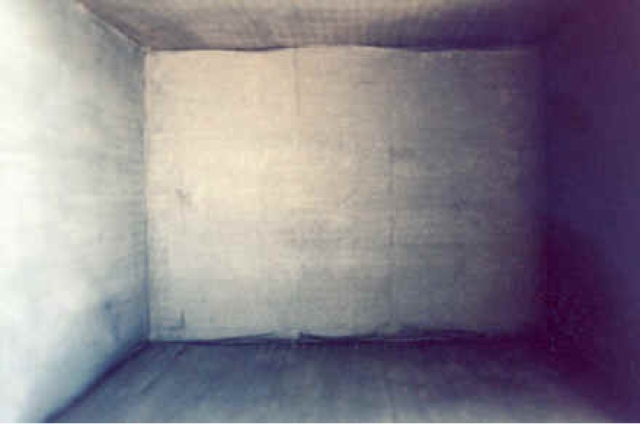Spent more time on Genet this weekend and early this week, performing in another scene from The Blacks for classmates, and analyzing scenes put together from The Blacks and The Balcony. The layers present in Genet's work are fascinating - every time you think you have gotten through to a new plateau, it cracks to reveal something further underneath, begging to be uncovered. In his plays, it seems there is a constant layering of lies; the characters are bottomless pits of identities, each new one to serve the purpose of their current situation. For directors this poses the challenge of helping your actors understanding what each identity is, where the shifts are, so that from the audience these cracks can be seen. The nuance between each must be subtle yet noticeable. Andrew suggested that perhaps some of Genet's "Truth" lies not in his plays, but perhaps in his novels. Or maybe it doesn't - in Prisoner of Love, which seems to sit in a middle-ground between fiction and documentary, just as the reader begins to feel they know his position on a subject, he'll pull that mat out from underneath you. No comfort, nothing is reliable, constantly undermining expectation. I wonder if this is his truth...the truth of the unreliability of the world, of expectation, of categorization.
Elsewhere, reading Edward Braun's "The Director And the Stage" as supplemental, given that I'm not in Sue's directing group for approaches. What I found really interesting was the sense of overlap this book gave; it is really easy to think that Stanislavsky did his thing, then Meyerhold, then Brecht, etc...but in fact there were little pockets of development happening everywhere, simultaneously, with achievements cropping up all over the place. What is also interesting is the afterword, the reminder that although they appear monumental now, at the time the events, the riots, the scandals, were relatively uneventful for the community as a whole, and it wasn't until viewed from the distance of the future that we can see the sigificance and assign value.
Some passages I found particularly useful....
On Jarry and the Surrealists (P58) - "Perceiving the universe and society as irrational and contradictory, they felt impelled to create works that were correspondingly irrational and contradictory in their forms, that stood the accepted conventions of theatre on their heads - and to achieve this they sought to exercise the closest possible control over the play in production, lest the theatre be tempted to impose its habitual symmetry on their calcuated disorder."
On Stanislavsky (P76) - "He seldon considers the peroduction as a total synthesis with a unified objective. What is more, he takes little account of the psychology of the
audience, assuming that if the individual performancecs are truthful the spectator will necessarily respond to their truthfulness through a process of empathy"
On Meyerhold (P126) - "It was precisely because the spectator was shown so little that he saw so much, superimposing his own imagined or remembered experiences on the events enacted before him. In this way the dialogue and characters assumed a significance and a profundity which overcame their intrinsic banality."
On Artaud (P188) - "Artaud based his entire approach to the production [of
The Cenci] on the principle of engulfing the audience with a massive accumulation of effects, so that its response would be sensual and involuntary rather than detached and intellectual."
On Grotowski and the production of
Apocalypsis (P197) - "But when the lights came on and the room was discovered empty, it did not necessarily mean that he had gone - or even that he had been. The room had simply been returned to the state it was in when the first pectator entered. So what had been witnessed? A group of ordinary people, in everyday clothes. Roles were assigned, amidst mirth, and assumed, rejected, fought against. But each role, once assumed, posessed that person who was trapped within it, drained by the excesses with which he fulfilled or denied it."


